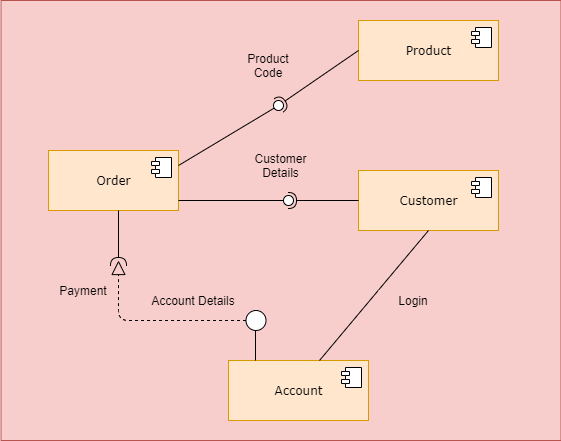UML diagrams for the Online Food Delivery project. Following are the different UML diagrams like Components, Activity, Use Case, and Sequence diagrams of the online food delivery.
UML Diagram for Online Food Delivery System
We’ve compiled structural UML diagrams i.e. component diagrams, and three types of behavioural UML diagrams i.e. Activity, Sequence, and Use Case diagrams for the Online Food Delivery Project. We have also explained the data flow diagram (DFD) for this project.
The Online Food Delivery project is a web-based platform where users can open the application in the web browser and view the list of food according to the category. Users can order the food in some easy steps.
With the help of these diagrams, one can understand the project better. This web application is developed to provide users with an online medium where they can order food.
Component diagram for Online Food Delivery System
The component diagram below shows the structural relations between components in an Online Food Delivery system. The components are connected by lines representing relationships within the systems.
In the diagram, it can be seen that there are components namely product, order, customer, and account. It shows how the customer component connects to the other components while using the system. Everything from the account details to ordering food to payment flow can be seen in the component diagram.
A customer can register first and order food and get the food delivered to the registered address. In this module food orders, quantity, etc can be managed.

Activity diagram for Online Food Delivery Project
Activity diagrams in UML display the functionalities of various activities and flow in management processes and software systems.
Here, Admin can add/remove different restaurants and restaurant owners into the system.
The restaurant owner can categorize the different food dishes, add/remove/update any food, edit prices of the dishes, view/confirm/cancel orders placed by users, accept payments online, and so on. The owner can keep all the records of the Users.

Sequence diagram for Online Food Delivery Project
Sequence diagrams in UML are used to illustrate the sequence of messages between objects in an interaction. A sequence diagram consists of a group of objects represented by lifelines and the messages they exchange overtime during the interaction.
Customers can search for food and desserts and can view categories before searching for the product, view the price of a selected product, add the product to the shopping cart, and make payments for the booking.

Use Case Diagram for Online Food Delivery Project
A UML use case diagram can create a broad, high-level view of the relationship between use cases, actors involved, and systems being performed.
As you can see from the examples below, use cases are represented by oval shapes, and the lines then show at which point an actor/user participates and interacts with their corresponding use case. You can see where each actor is involved within the entire process and where they’re excluded.
In this case, Admin will be able to add restaurants and owners of restaurants into the system. On the other hand, restaurant owners can add categories of food and desserts. The owner can access food and dessert order lists and bookings.

DFD Diagram for Online Food Delivery Project
A data flow diagram represents the flow of information for any process or system. It shows the system with its relationship to external entities. Here, we can see how the flow works between users and the system.
In Online Food Delivery System, Admin will be responsible for maintaining the system and also, keeping a check on the restaurants, their owners, and the management of the system. On the other hand, customers can register, log in using the login credentials, and order food online.

Click here to get the source code for Online Food Delivery System in Java
